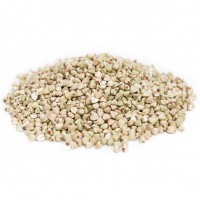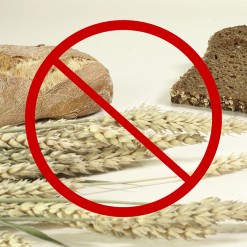

A gluten-free diet is a diet that, obviously, excludes the protein gluten. Gluten is found in grains such as rye, barley, and wheat. A gluten-free diet is usually used to treat celiac disease, which causes inflammation in the intestines making it difficult to digest food. Some people who don’t have celiac disease may also suffer various symptoms when they eat food with gluten, however, which is known as non-celiac gluten sensitivity.
Gluten refers to the proteins found in wheat endosperm, which is tissue produced in seed that is then ground to make flour. Gluten is made up of two different proteins: glutenin (a glutelin protein) and gliadin (a prolamin protein). Gluten is usually considered part of cereal grains like barley and rye, although “true gluten” is defined as being specific to wheat. While gluten isn’t necessarily bad, some people are gluten-intolerant, which means their bodies produce an abnormal immune response during the digestion process. When someone is gluten intolerant, doctors usually recommend a gluten-free diet. Recently, however, gluten-free diets are becoming more and more popular among people who do not have gluten intolerance but want to change their eating habits and lifestyle.
 Gluten is found in a lot of food products, so going gluten-free can be a daunting task, whether you are doing it because of health reasons or because of personal preference. Just because gluten is abundant, however, doesn’t mean you won’t be able to have a good meal again. There are many, many alternatives that are either naturally gluten-free or made specifically to replace a food that has gluten. First, you want to focus on what you can eat rather than what you can’t eat. You will be miserable if you spend all your time thinking about the cookies or pasta you aren’t allowed to have. Find a bunch of gluten-free substitutes, try them, and see what you like and what you dislike. There are many different websites that give tasty recipes or list brands that produce gluten-free snacks. You also need to learn the grains you have to avoid. Find a list with the basics of what to avoid and keep it in your kitchen, in your phone, or in your pocket. Ideally, you should memorize it. You also need to get into the habit of reading labels. Gluten can hide in unlikely places, so it is incredibly important to read the labels of all items you buy. There are many natural alternatives to gluten, such as vegetables and fruits. They are always a safe choice when in doubt. They are also extremely healthy, which is another benefit a gluten-free diet provides. If you are going out for dinner, check the restaurant’s menu or call them to see if they can make a gluten-free dish for you. More and more restaurants are providing gluten-free options, but it is still wise to make sure, and to double check with the server when you are there. If you can’t imagine not having bread in your diet, buy a bread machine and make your own bread! There are numerous gluten-free flours with different tastes and properties, and you also get the satisfaction and enjoyment of making your own food!
Gluten is found in a lot of food products, so going gluten-free can be a daunting task, whether you are doing it because of health reasons or because of personal preference. Just because gluten is abundant, however, doesn’t mean you won’t be able to have a good meal again. There are many, many alternatives that are either naturally gluten-free or made specifically to replace a food that has gluten. First, you want to focus on what you can eat rather than what you can’t eat. You will be miserable if you spend all your time thinking about the cookies or pasta you aren’t allowed to have. Find a bunch of gluten-free substitutes, try them, and see what you like and what you dislike. There are many different websites that give tasty recipes or list brands that produce gluten-free snacks. You also need to learn the grains you have to avoid. Find a list with the basics of what to avoid and keep it in your kitchen, in your phone, or in your pocket. Ideally, you should memorize it. You also need to get into the habit of reading labels. Gluten can hide in unlikely places, so it is incredibly important to read the labels of all items you buy. There are many natural alternatives to gluten, such as vegetables and fruits. They are always a safe choice when in doubt. They are also extremely healthy, which is another benefit a gluten-free diet provides. If you are going out for dinner, check the restaurant’s menu or call them to see if they can make a gluten-free dish for you. More and more restaurants are providing gluten-free options, but it is still wise to make sure, and to double check with the server when you are there. If you can’t imagine not having bread in your diet, buy a bread machine and make your own bread! There are numerous gluten-free flours with different tastes and properties, and you also get the satisfaction and enjoyment of making your own food!
